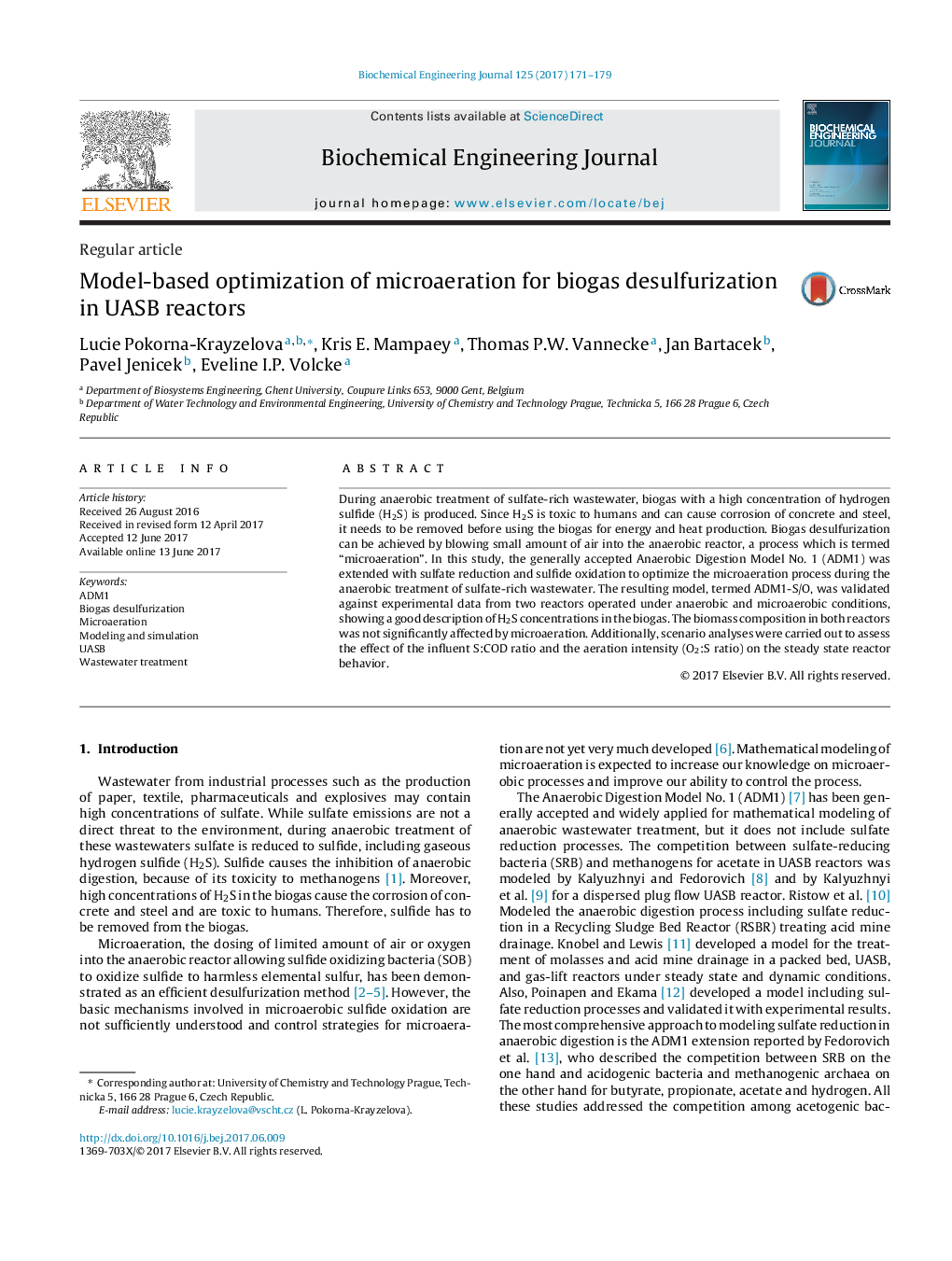| Article ID | Journal | Published Year | Pages | File Type |
|---|---|---|---|---|
| 4752136 | Biochemical Engineering Journal | 2017 | 9 Pages |
â¢The extension of ADM1 with sulfate reduction and sulfide oxidation (microaeration).â¢Microaeration model was validated against experimental result.â¢Model validation showed a good fit in terms of H2S emissions and biogas flow.
During anaerobic treatment of sulfate-rich wastewater, biogas with a high concentration of hydrogen sulfide (H2S) is produced. Since H2S is toxic to humans and can cause corrosion of concrete and steel, it needs to be removed before using the biogas for energy and heat production. Biogas desulfurization can be achieved by blowing small amount of air into the anaerobic reactor, a process which is termed “microaeration”. In this study, the generally accepted Anaerobic Digestion Model No. 1 (ADM1) was extended with sulfate reduction and sulfide oxidation to optimize the microaeration process during the anaerobic treatment of sulfate-rich wastewater. The resulting model, termed ADM1âS/O, was validated against experimental data from two reactors operated under anaerobic and microaerobic conditions, showing a good description of H2S concentrations in the biogas. The biomass composition in both reactors was not significantly affected by microaeration. Additionally, scenario analyses were carried out to assess the effect of the influent S:COD ratio and the aeration intensity (O2:S ratio) on the steady state reactor behavior.
